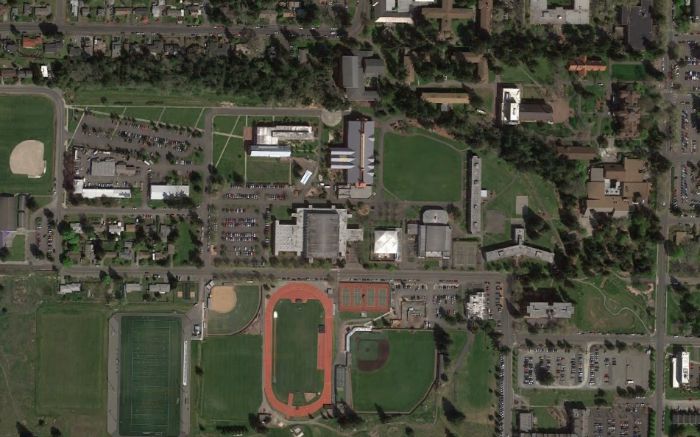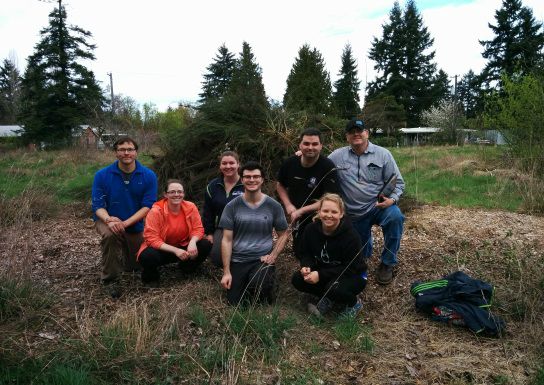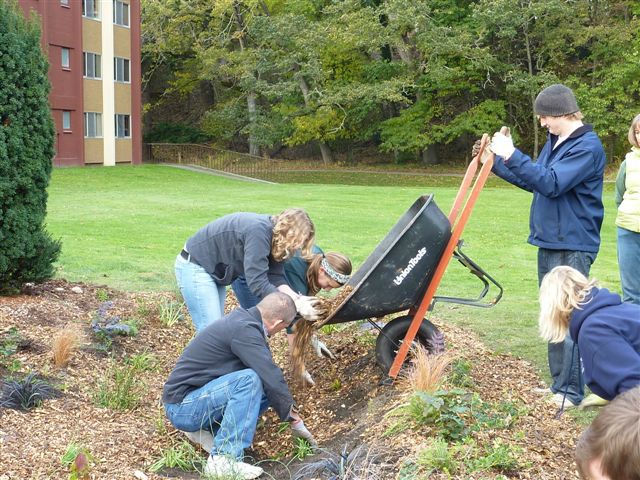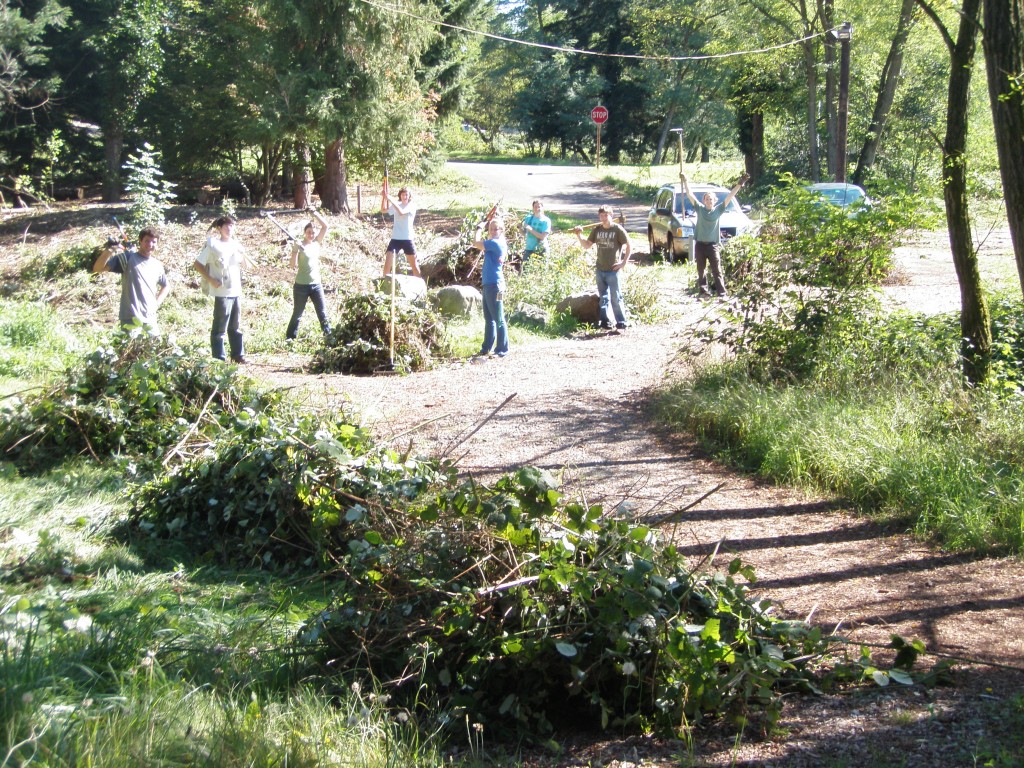Habitat Restoration at PLU
If you are interested in volunteering with habitat restoration projects on campus, please contact us at restore@plu.edu. Volunteer opportunities will also be advertised through the Center for Community Engagement and Services, and additional restoration opportunities can be found through Forterra, Earth Corps and Green Tacoma Partnership.
PLU Campus Green Belt
PLU campus has a hillside that divides the upper and lower areas of campus. These natural areas contain Garry oak trees that are protected in Pierce County due to their decline in presence. The habitat quality of this oak woodland is greatly reduced because of the prominence of invasive species and fragmentation of surrounding area.
PLU and Forterra Environmental Restoration Pilot Program
In the spring of 2015 military and non-military students from PLU participated in an Environmental Restoration Pilot Program in partnership with Forterra, and funded by a grant from the Lucky Seven Foundation. The project was conducted on the Clover Creek Reserve and was comprised of 4 Saturdays working to learn about environmental restoration work, mitigating invasive species, and planting native species. The project was facilitated by Forterra along with guest speakers from the Pierce Conservation District (PCD), and the United States Fish and Wildlife Service (USFWS).
The Fred L. Tobiason Outdoor Learning Center - A Habitat Restoration Project
The Habitat Restoration Project is a student-led project that seeks to restore habitat south of the UC and on the adjacent western slope. The area was at one time dominated by invasive species such as Himalayan blackberry, English ivy and bindweed, but volunteers have already begun to remove these invasive species. The project will re-establish native plants carefully selected and consistent with historical plant communities of the Oak Woodland/Prairie Mosaic vegetation zone. PLU has impressive groves of oaks along the hillside that divides Upper and Lower Campus and is well connected to surrounding habitats in the watershed. Along Clover Creek there are several sites actively being restored by Forterra and Pierce County Surface Water Management. The project also will create an outdoor classroom, where the wider community will be invited to explore the relationship between humans and the environment though interpretive signage. The signage will recognize the natural history of the area, including the historic presence of Clover Creek on campus and indigenous populations, water quality issues and other human impacts on the environment. The volunteerism, stewardship and community connections of this project may allow PLU to apply its experience with habitat restoration to a greater portion of its greenbelt hillside and eventually to a portion of the PLU Golf Course, part of which is planned to be developed into a sports complex, but the southern portion would be an ideal site for prairie restoration due to its native prairie soils, proximity to other prairie habitats, and the presence of Mima mound formations.
For more information, please visit
https://www.plu.edu/marcom/news/2011/06/30/life-of-the-mind/






